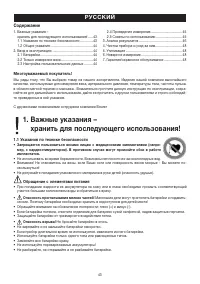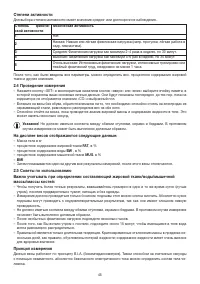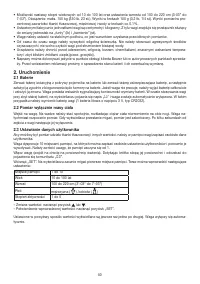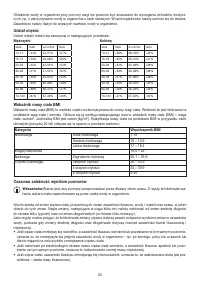Весы Beurer BG 13 - инструкция пользователя по применению, эксплуатации и установке на русском языке. Мы надеемся, она поможет вам решить возникшие у вас вопросы при эксплуатации техники.
Если остались вопросы, задайте их в комментариях после инструкции.
"Загружаем инструкцию", означает, что нужно подождать пока файл загрузится и можно будет его читать онлайн. Некоторые инструкции очень большие и время их появления зависит от вашей скорости интернета.
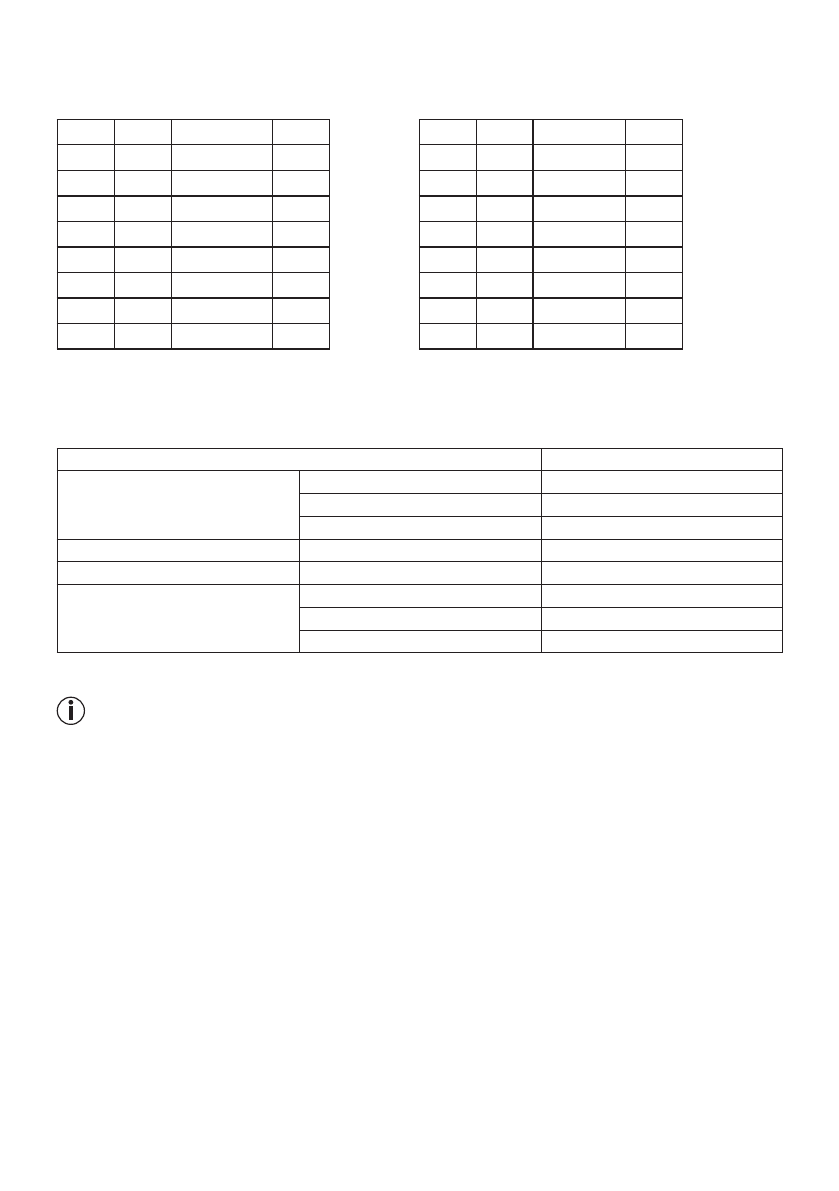
14
Muscle percentage:
The muscle percentage (%) is normally within the following ranges:
Man Woman
Age
low
normal
high
Age
low
normal
high
10–14
<44%
44–57%
>57%
10–14
<36%
36–43%
>43%
15–19
<43%
43–56%
>56%
15–19
<35%
35–41%
>41%
20–29
<42%
42–54%
>54%
20–29
<34%
34–39%
>39%
30–39
<41%
41–52%
>52%
30–39
<33%
33–38%
>38%
40–49
<40%
40–50%
>50%
40–49
<31%
31–36%
>36%
50–59
<39%
39-48%
>48%
50–59
<29%
29–34%
>34%
60–69
<38%
38–47%
>47%
60–69
<28%
28–33%
>33%
70–100
<37%
37–46%
>46%
70–100
<27%
27–32%
>32%
Body mass index (BMI)
The body mass index (BMI) is a number that is often called upon to evaluate body weight. The figure is calculated
from body weight and height. The formula is: body mass index = body weight : height². The measurement unit for
BMI is [kg/m²]. According to the BMI, weight is classified for adults (20 years and over) using the following values:
Category
BMI
Underweight
Severely underweight
< 16
Underweight
16-16.9
Slightly underweight
17-18.4
Normal weight
18.5-25
Overweight
Overweight
25.1-29.9
Obese (overweight)
Class I obesity
30-34.9
Class II obesity
35-39.9
Class III obesity
≥ 40
Results in relation to time
Note:
Remember that only long-term trends are important. Short-term fluctuations in weight over a few days
are usually the result of a loss of fluid.
The interpretation of the results will depend on changes in your overall weight and body fat, body water and muscle
percentages, as well as on the period during which these changes take place. Sudden changes within days must
be distinguished from medium term changes (over weeks) and long term changes (months).
A basic rule is that short term changes in weight almost exclusively represent changes in water content, whereas
medium and long term changes may also involve the fat and muscle percentages.
• If your weight reduces over the short term, but your body fat percentage increases or remains the same, you
have merely lost water – e.g. after a training session, sauna session or a diet restricted only to rapid weight loss.
• If your weight increases over the medium term and the body fat percentage falls or stays the same, then you
could have built up valuable muscle mass.
• If your weight and body fat percentage fall simultaneously then your diet is working – you are losing fat mass.
• Ideally you should support your diet with physical activity, fitness or power training. This way you can increase
your muscle percentage over the medium term.
• Body fat, body water or muscle percentages should not be added (certain elements of muscle tissue also contain
body water).
4. Cleaning and care of the unit
The unit should be cleaned occasionally.Clean using a damp cloth, to which you can apply a little detergent if
necessary.
Содержание
- 2 Русский; Уменьшить
- 43 РУССКИЙ; Многоуважаемый покупатель!; Важные указания –; Указания по технике безопасности; Опасность проглатывания мелких частей!; Содержание
- 44 Ввод в эксплуатацию; Только измерение веса
- 46 Результаты измерений неверные:; Анализ результатов; Процентное содержание жировой ткани; Процентное содержание воды:; Мужчины Женщины
- 47 Процентное содержание мышечной ткани:; Временная связь результатов
- 48 Чистка прибора и уход за ним; Неверное измерение; Возможные причины неполадок










































